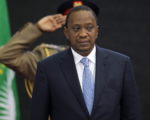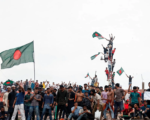Bangladesh Protests: Over 50 Dead Amid Escalating Violence
The ongoing anti-government protests in Bangladesh have intensified, resulting in the deaths of at least 59 people, including 13 police officers. The violence has erupted as student leaders and anti-government demonstrators demand the resignation of Prime Minister Sheikh Hasina and broader reforms. Pabna, and Rangpur.

Protest Origins and Escalation
The unrest began with student-led calls to abolish quotas for civil service jobs, but has since expanded into a broader anti-government movement. Protesters have clashed with police and government supporters, leading to significant casualties. Both sides have employed live ammunition, tear gas, and rubber bullets. The situation has worsened with nighttime curfews and restrictions on mobile internet access in Dhaka, exacerbating communication difficulties.
Government Response and Internet Shutdown
Bangladesh’s Law and Justice Minister Anisul Huq defended the government’s actions, claiming restraint despite the chaos. In response to the unrest, the government has suspended 4G internet service in Dhaka while maintaining broadband access. This move has hindered the ability of residents to communicate and access information.
Student Protests and Government Actions
Student groups, notably Students Against Discrimination, have intensified their campaign with calls for a nationwide civil disobedience movement, urging people to withhold taxes and utility bills, and calling for a shutdown of factories and public transport. These actions follow a significant crackdown by security forces, which has led to the detention of around 10,000 individuals, including opposition supporters and students.
Military Involvement and Political Tensions
Amidst the turmoil, Prime Minister Hasina has offered unconditional dialogue with student leaders, which has been rejected. The government has mobilized the military to restore order, and the army chief, General Waker-Uz-Zaman, has reiterated the army’s commitment to public welfare and state needs. Despite these efforts, the situation remains volatile, with protests continuing in multiple cities.
Reactions and Future Outlook
The protests pose a severe challenge to Sheikh Hasina’s administration, which was re-elected for a fourth term in January under controversial circumstances. The government has faced criticism for its heavy-handed approach and alleged human rights violations. As tensions persist, both sides are preparing for a critical period, with the potential for further violence and unrest.
The situation in Bangladesh underscores the growing friction between government authorities and citizens demanding political reform and accountability. The coming days will be crucial in determining whether a resolution can be reached or if the conflict will escalate further.




















